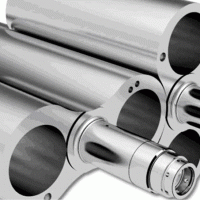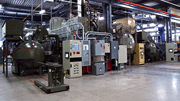In many vacuum systems, especially those where the chamber is large, has a large internal surface area and the chamber load adds extra surface area, the pump down can be slowed substantially when the chamber pressure drops to the range where the water vapor molecules on the surface desorb and have to be pumped away.
Pressure and temperature determine when this vapor desorbs, but at ambient temperature around seventy two degrees Fahrenheit or twenty degrees Centigrade the vapor desorbs from about 50 Torr down to about 0.1 Torr. The vapor pressure of water at ambient temperature is about 18 Torr, so that is where maximum desorption may occur.


